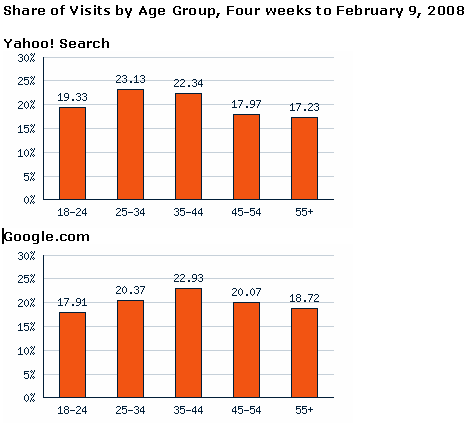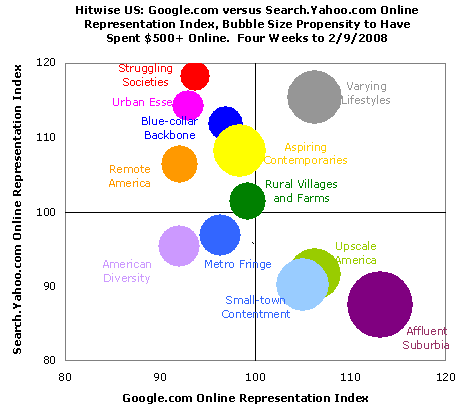
Our landing page optimization series continues! On Monday, John discussed elements of your landing page design that can enhance user interaction and increase conversions. Yesterday, Amber focused on the using the one-two combo of a simple contact form and a strong call-to-action. Both of these articles emphasize the need to continually test the various elements of your landing page. Today, I will discuss splitting your split test results (did that just hurt your brain?). This means that individual landing pages may perform differently in each search engine, and you need to optimize accordingly!
The impetus for this article is that I was testing various landing pages in each search engine for a client. As the landing pages gathered enough measurable data I noticed that one landing page was working best in Google, and a separate landing page was appealing best to the Yahoo crowd.
What did were my results? Each landing page had a disparate look and feel. Basically, here is how the results turned out:
- Google: The “winning” landing page had longer, more detailed body content. Our body content was shaped into 4 long paragraphs that described my client’s service offerings and provided benefits of using this service.
- Yahoo: The “winning” landing contained 2 images; one image at the top of a person and the bottom image was a simple testimonial. The text was broken into shorter blocks, and we used a bullet point list of benefits.
As a result, we focused on the landing pages that worked best in each search engine. In the end, we had different landing pages for each search engine.
I have often heard that PPC managers will use Google AdWords as their test environment for their ad texts and landing pages. And whatever works in AdWords they will then apply to their Yahoo campaign. I’m sure most of you don’t do this. But just in case this is your strategy, I would highly recommend that you conduct unique landing page testing within each search engine.
You should conduct a full range of testing in each search engine because they each have a different audience demographic. What appeals to the Google audience may not appeal to the Yahoo audience. How do the audiences break down between Google and Yahoo?
In February, Heather Hopkins at Hitwise released a report regarding audience by search engine. As you can see in this first graph: Yahoo draws a younger audience than Google. Their Lifestyle data confirms that the groups that are highly indexed on Google tend to be older (55+) and the groups highly indexed on Yahoo! Search tend to be younger.
Also, Heather created a Lifestyle Quadrant Analysis to compare the online audience of Google.com and Yahoo! Search.
In regards to this graph, Heather says, “The figure summarizes the audience strengths and weaknesses for the two search engines. Visits by MOSAIC Group to Search.Yahoo.com are plotted on the y-axis and to Google.com on the x-axis. For example, the top left hand box indicates unique strengths for Yahoo! Search, in that they are groups that are over-indexed relative to the online population on Yahoo! Search but under-indexed on Google.com. The bigger the bubble the higher the propensity to have spent $500 online (based on offline data collected by Experian).”
As you can see, Google users and Yahoo users are quite different. And your landing pages should be optimized accordingly. Let me ad the caveat that sometimes you will find that end-all-be-all landing page that is dominate in both search engines. This happens to me all the time. But in order to make sure this is the best landing page, you need to test in both search engines! Happy testing.





